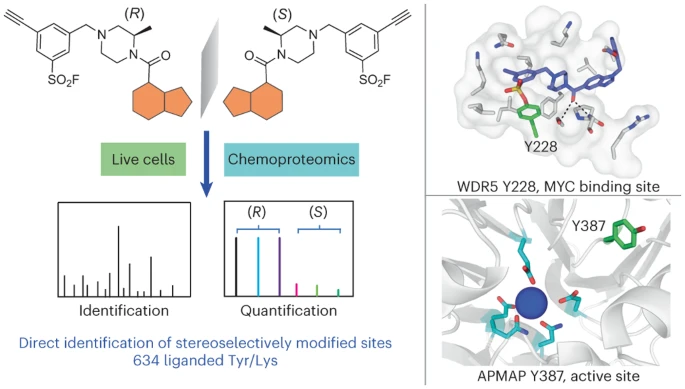Thomas, A.; Serafini, M.; Grant, E.; Coombs, E.; Bluck, J.; Schiedel, M.; McDonough, M.; Reynolds, J.; Lee, B.; Platt, M.; Sharlandjieva, V.; Biggin, P.; Duarte, F.; Milne, T.; Bush, J.; Conway, S.
ChemRxiv 2023.
https://doi.org/10.26434/chemrxiv-2023-8qnvr
Target validation remains a challenge in drug discovery, which leads to a high attrition rate in the drug discovery process, particularly in Phase II clinical trials. Consequently, new approaches to enhance target validation are valuable tools to improve the drug discovery process. Here we report the combination of site-directed mutagenesis and electrophilic fragments to enable the rapid identification of small molecules that selectively inhibit the mutant protein. Using the bromodomain- containing protein BRD4 as an example, we employed a structure-based approach to identify the L94C mutation in the first bromodomain of BRD4 [BRD4(1)] as having minimal effect on BRD4(1) function. We then screen a focused, KAc mimic-containing fragment set, and a diverse fragment library against the mutant and wild-type proteins, and identified a series of fragments that showed high selectivity for the mutant protein. These compounds were elaborated to include an alkyne click tag to enable the attachment of a fluorescent dye. These clickable compounds were then assessed in HEK293T cells, transiently expressing BRD4(1)WT or BRD4(1)L94C, to determine their selectivity for BRD4(1)L94C over other possible cellular targets. One compound was identified that shows very high selectivity for BRD4(1)L94C over all other proteins. This work provides proof-of-concept that the combination of site-directed mutagenesis and electrophilic fragments, in a mutant and conjugate approach, can enable rapid identification of small molecule inhibitors for an appropriately mutated protein of interest. This technology can be used to assess the cellular phenotype of inhibiting the protein of interest, and the electrophilic ligand provides a starting point for non-covalent ligand development.





